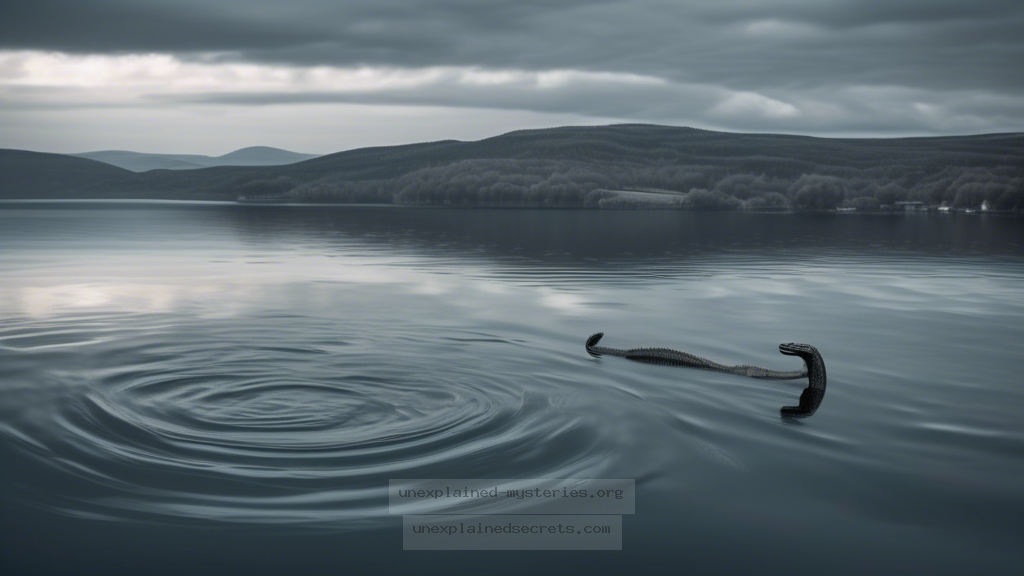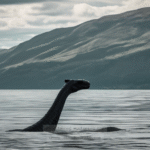What Do Recent Sonar Discoveries Reveal About the Loch Ness Monster’s Existence?
What Do Recent Sonar Discoveries Reveal About the Loch Ness Monster’s Existence?
The Loch Ness Monster, affectionately referred to as “Nessie,” has intrigued both scientists and enthusiasts for decades. The question of whether this legendary creature exists has captivated imaginations, ignited debates, and inspired countless expeditions. Recent advancements in sonar technology have provided new insights into the depths of Loch Ness, raising the question: what do these discoveries reveal about the existence of the Loch Ness Monster? In this blog post, we will delve into the historical context of Loch Ness sightings, explore the core concepts behind sonar technology, analyze practical evidence gathered from recent expeditions, consider alternative perspectives, debunk common misconceptions, and look ahead to future developments in the ongoing search for Nessie.
Historical Context of Loch Ness Sightings
The lore of the Loch Ness Monster dates back to ancient times, with the first recorded sighting occurring in 565 AD when St. Columba reportedly encountered a large creature in the loch. However, modern interest surged in the 1930s following the publication of a famous photograph known as the “Surgeon’s Photograp” in 1934, which purportedly showed Nessie’s long neck and head rising from the water. This photograph spurred public fascination and led to a series of subsequent sightings over the following decades. Notable reports include:
- The 1950s and 1960s saw numerous sightings, including the account of a local man, who claimed to have seen a large creature swimming near the shore.
- In 1975, a photograph by a local resident, known as the “Nessie’s Back” photo, reignited interest, depicting an unusual shape in the water.
- More recently, in 2018, a tourist captured a video that sparked further debate among cryptozoologists and researchers.
These historical accounts demonstrate a persistent intrigue surrounding Loch Ness, but they also highlight the need for rigorous scientific investigation to separate fact from fiction.
Core Concepts: Understanding Sonar Technology
Sonar, an acronym for Sound Navigation and Ranging, is a technology that uses sound waves to detect objects underwater. It works by emitting sound pulses and measuring the time it takes for echoes to return after bouncing off an object. This technology has been used in various fields, including marine navigation, fishing, and oceanography. In the context of Loch Ness, sonar technology has evolved significantly, allowing researchers to explore the depths of the loch with unprecedented accuracy.
Recent sonar expeditions have employed advanced technologies such as multibeam sonar and side-scan sonar. These systems generate detailed maps of underwater terrain and can identify potential anomalies, such as large objects that may be hiding beneath the surface. The application of sonar in Loch Ness has opened new avenues for understanding what lies beneath its murky waters.
Recent Sonar Discoveries in Loch Ness
In 2022, a team of researchers conducted a comprehensive sonar survey of Loch Ness. Utilizing advanced multibeam sonar systems, they mapped more than 30 square kilometers of the loch’s depths. The findings were both intriguing and perplexing. Among the results:
- The sonar detected several large, unidentified objects at various depths, raising questions about their origins and potential links to the Loch Ness Monster.
- Some of these anomalies were estimated to be over 30 feet long, prompting speculation about what they could be.
Interestingly, the team was quick to note that sonar readings do not definitively prove the existence of a creature like Nessie; they merely provide a starting point for further investigation. The anomalies could be anything from large schools of fish to submerged logs or man-made debris.
Practical Evidence: What Does it All Mean?
The practical implications of sonar discoveries in Loch Ness are multifaceted. On one hand, the data collected provides a tangible basis for further exploration and research. Researchers can analyze the sonar images to determine the nature of the unidentified objects, leading to more informed theories about what might be lurking beneath the surface.
However, interpreting these findings requires caution. The ambiguity of sonar data leaves plenty of room for speculation, and the excitement surrounding potential discoveries can sometimes overshadow the need for rigorous scientific analysis. As such, the results of sonar surveys should be approached with a critical mindset, recognizing that they may not directly correlate with the existence of a mythical creature.
Alternative Perspectives on the Loch Ness Monster
While many enthusiasts remain convinced of Nessie’s existence, there are alternative perspectives that warrant consideration. Skeptics argue that the legend of the Loch Ness Monster is primarily a product of folklore, misidentifications, and the human propensity to attribute meaning to unexplained phenomena.
Some scientists suggest that sightings of large creatures may be attributed to known wildlife, such as eels or otters, which can be misidentified when viewed from a distance. Furthermore, the psychological phenomenon known as pareidolia—where the mind perceives familiar patterns in random stimuli—can lead individuals to see shapes or forms in the water that may not exist.
Common Misconceptions About Loch Ness and Nessie
The Loch Ness Monster has been surrounded by myths and misconceptions that often cloud public understanding. Some of these include:
- Misconception 1: All sightings of Nessie are hoaxes. While some have been proven false, many credible witnesses have reported their experiences.
- Misconception 2: There is no scientific evidence to support Nessie’s existence. In reality, sonar technology and environmental studies are ongoing, and data continues to be collected.
- Misconception 3: Nessie must be a dinosaur or prehistoric creature. The identity of Nessie remains unknown, and attributing it to a specific species can limit scientific inquiry.
Understanding these misconceptions is important for fostering a more nuanced and informed discussion surrounding the Loch Ness Monster.
Best Practices for Investigating Loch Ness
For those interested in investigating the mysteries of Loch Ness, there are several best practices to keep in mind:
- Engage with the Community: Join local cryptozoological societies or online forums to connect with like-minded individuals and share insights.
- Utilize Technology: Familiarize yourself with sonar technology and its applications. Understanding how to interpret sonar data can be invaluable for enthusiasts.
- Document Findings: Keep a detailed log of sightings, experiences, and data collected during investigations. This can help build a comprehensive picture over time.
- Maintain Skepticism: Approach findings with a critical eye and avoid jumping to conclusions without substantial evidence.
Future Developments and Ongoing Research
The search for the Loch Ness Monster continues to evolve, with ongoing research efforts and technological advancements paving the way for exciting discoveries. Scientists are increasingly employing genetic testing methods, such as environmental DNA (eDNA) sampling, to analyze water samples for signs of elusive creatures. This method allows researchers to detect DNA from living organisms, potentially revealing the presence of unknown species in Loch Ness.
Future sonar expeditions are also planned, with teams hoping to conduct more extensive surveys of the loch. The combination of these technologies may lead to new insights and a deeper understanding of the ecosystem within Loch Ness.
Conclusion: The Mystery Continues
The question of whether the Loch Ness Monster exists remains one of the most enduring mysteries in cryptozoology. Recent sonar discoveries have provided intriguing leads but have not definitively proven the existence of this legendary creature. As researchers continue to explore the depths of Loch Ness using advanced technology, the possibility of uncovering new evidence remains alive. Whether Nessie is a figment of folklore or a real creature lurking in the depths, the quest for answers continues to captivate the imagination of people around the world. As we advance our understanding of sonar technology and marine biology, we may yet uncover the truth behind the enigmatic Loch Ness Monster.
Other Articles
Recent Posts
- What Happened to Flight MH370? The Conspiracy Theories That Still Haunt Us
- What Secrets Lurk Within the Walls of the Infamous Trans-Allegheny Lunatic Asylum?
- What Evidence Supports the Existence of Bigfoot in the Pacific Northwest?
- What Happened to the Indus Valley Civilization? Unraveling the Mysteries of Ancient Urban Life
- Can Telepathy Be Scientifically Proven Through Laboratory Evidence?







